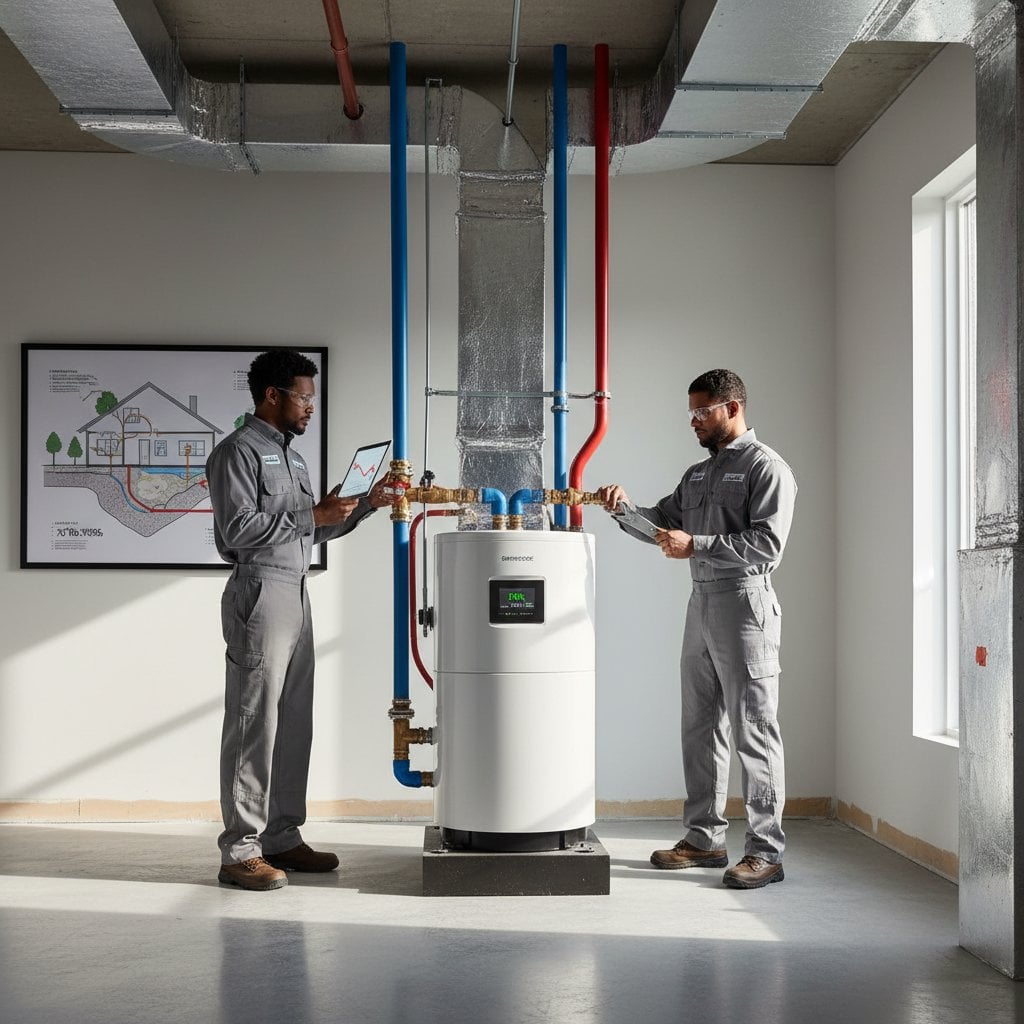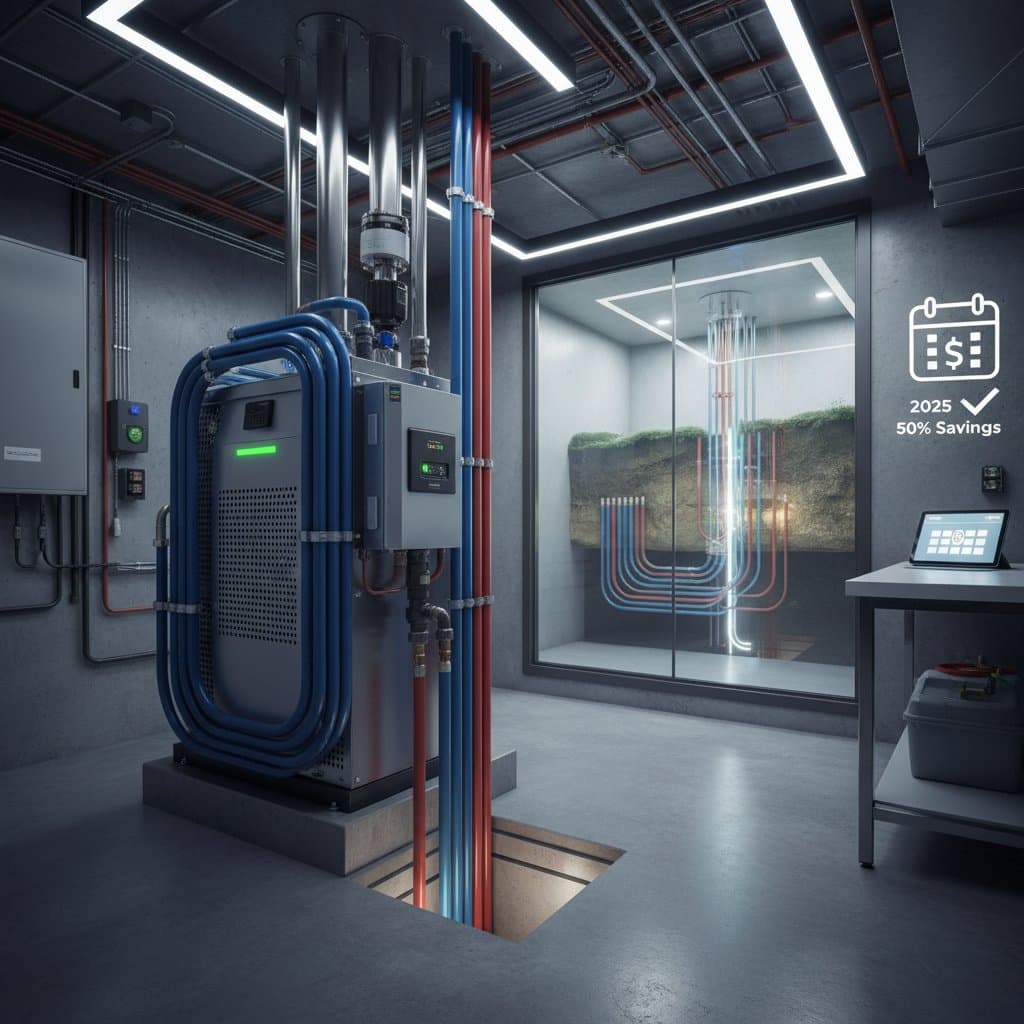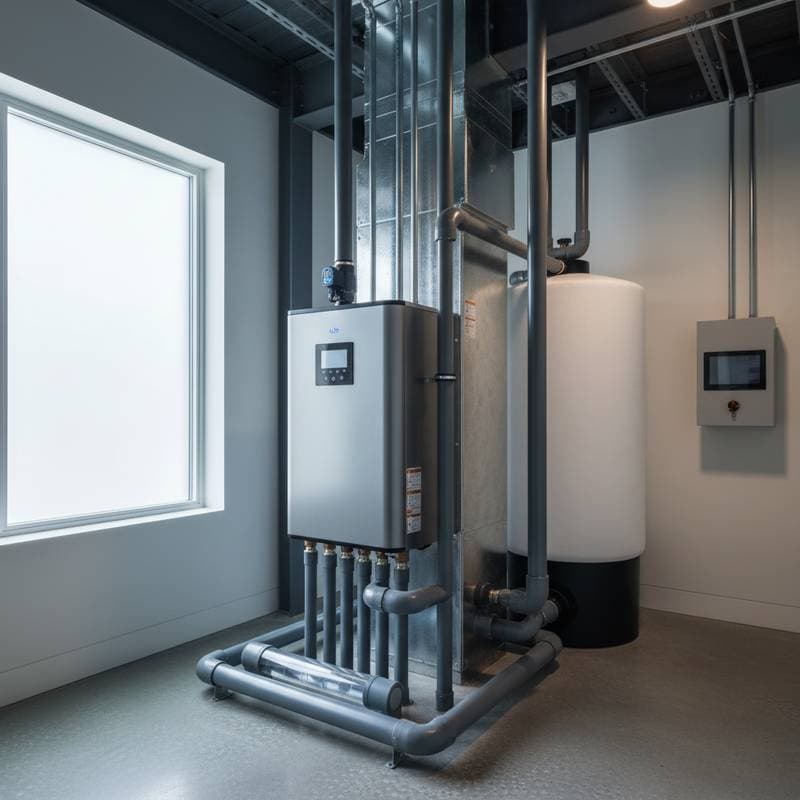Although the initial outlay proves higher, the payback period remains attractive, often spanning five to ten years through energy savings alone. Federal tax credits, state rebates, and low-interest loans can accelerate this timeline. Once recovered, the system delivers heating and cooling at minimal ongoing cost, limited primarily to routine upkeep.
Key Efficiency Ratings for Geothermal Systems
To assess a geothermal system's value, focus on established performance metrics that quantify energy use.
- Coefficient of Performance (COP): This rating evaluates heating output relative to electricity input. For instance, a COP of 4.0 indicates that the system generates four units of heat energy for each unit of electricity consumed.
- Energy Efficiency Ratio (EER): This measures cooling performance under standard conditions. Superior EER ratings, such as 20 or higher, signify reduced electricity demands during summer months.
Conventional air-source heat pumps seldom achieve these benchmarks, as fluctuating outdoor temperatures hinder their efficiency. Geothermal systems benefit from the earth's consistent thermal reservoir, ensuring reliable operation across seasons.
Benefits for Health, Comfort, and Indoor Environment
Geothermal HVAC extends advantages beyond energy efficiency to overall well-being. These systems avoid combustion processes entirely, thereby eliminating risks associated with carbon monoxide exposure.
Without external condenser units, noise levels drop substantially, fostering serene indoor and outdoor environments. Moreover, precise humidity regulation prevents excess moisture buildup, which safeguards furnishings, minimizes dust mites and mold, and eases breathing for occupants with sensitivities.
In regions with extreme weather variations, this consistent climate control elevates daily comfort, reducing the need for supplemental fans or dehumidifiers.
Durability, Reliability, and Long-Term Security
Geothermal systems excel in longevity, with underground components shielded from elemental damage like frost, UV exposure, and debris. Properly installed loops can last 50 years or more, while indoor heat pumps endure 25 years with standard care.
This robustness minimizes repair frequency and associated expenses. Homeowners gain predictable utility forecasts, free from the volatility of fuel price swings or equipment failures common in traditional setups.
For those committed to a property over the long haul, geothermal represents a foundational upgrade that secures comfort and finances for generations.
Enhancing Property Value and Market Attractiveness
As environmental awareness grows, energy-efficient features like geothermal HVAC appeal to a broadening pool of buyers. These systems underscore a home's commitment to sustainability and operational efficiency, traits that resonate in competitive real estate markets.
Appraisers and agents note that properties equipped with geothermal often secure higher offers, with value uplifts ranging from 2 to 5 percent in eco-conscious areas. The installation also shortens selling timelines, as discerning purchasers prioritize verified low-energy homes.
Addressing Homeowner Concerns
Does geothermal suit every location?
Professionals design systems to accommodate diverse sites by selecting appropriate loop types based on soil type, water table depth, and available space. Consult certified experts to evaluate feasibility for your property.
Can it integrate with current ductwork?
In most cases, existing ducts require only minor adjustments, such as insulation upgrades or airflow balancing. Older networks might benefit from professional inspections to ensure compatibility and efficiency.
What maintenance does it demand?
Owners perform simple tasks like replacing air filters every three months and annually inspecting fluid levels in closed-loop systems. Professional servicing every few years suffices for optimal function.
Is supplemental heating necessary?
Geothermal handles demands in most climates, but in sub-zero zones, a compact electric or gas backup addresses rare peaks. Dual-fuel configurations provide seamless transitions.
What financing and incentives exist?
Numerous programs ease adoption, including the federal Investment Tax Credit covering 30 percent of costs and state-specific grants. Energy audits often qualify homes for additional utility rebates; local governments maintain updated directories.
Steps to Install Geothermal HVAC
Embark on a geothermal upgrade by conducting a site-specific energy assessment through a qualified contractor. This evaluation maps your home's thermal needs and identifies optimal system sizing.
Consider these practical actions:
- Obtain at least three detailed bids outlining equipment specifications, installation timelines, and performance guarantees.
- Confirm the installer's certification from bodies like the International Ground Source Heat Pump Association.
- Account for post-installation site restoration, including reseeding lawns or repairing driveways affected by trenching.
- Incorporate enhancements like programmable thermostats or solar integration to amplify efficiency from day one.
A well-executed geothermal installation transcends mere utility replacement. It establishes a foundation for reduced environmental impact, unwavering comfort, and financial prudence that endures for decades.









